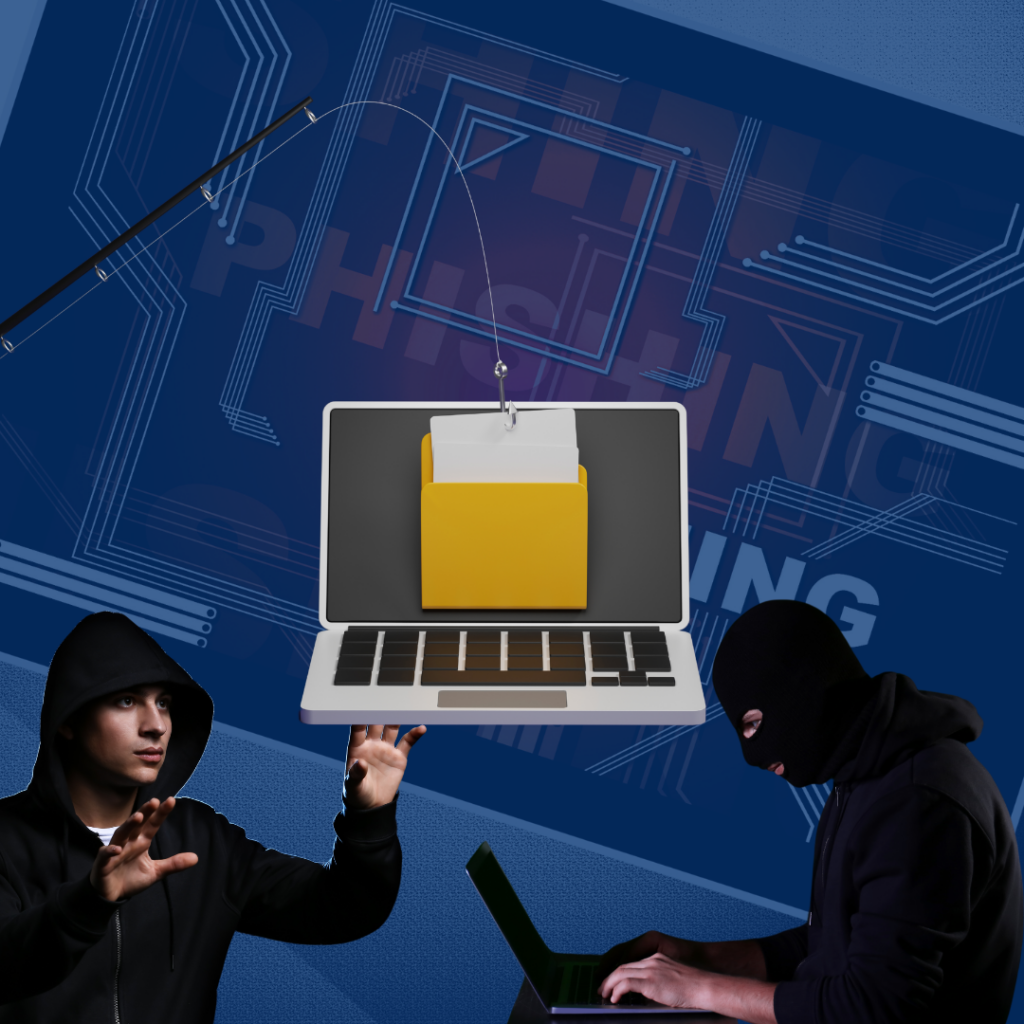This content has been archived. It may no longer be relevant
Picture this: you’re starting your day with a cup of coffee, ready to dive into your tasks, when an email that seems to be from a trusted partner shows up in your inbox. First, It appears legitimate, but lurking inside is a phishing scam crafted by cybercriminals. 
Thus, this type of attack is happening more frequently to businesses, large and small. In order to prevent phishing scams, it’s crucial to stay alert and protect your business from these growing cyber threats.
The Growing Threat of Phishing Scams
Phishing scams are constantly evolving, becoming more advanced and harder to detect every day. As a business decision-maker, it’s essential to stay informed about these growing cyber threats.
Hence, many phishing attempts are disguised as legitimate emails, tricking even the most cautious employees. In fact, over 70% of employees acknowledge engaging in behavior that increases their vulnerability to security threats.
To effectively prevent phishing scams, it’s important to understand the tactics cybercriminals use and debunk common myths, such as believing only large companies are targets. Strengthening your cybersecurity strategy and training your team is crucial in safeguarding your business from these attacks.
Debunking the Biggest Myth to Prevent Phishing Scams
First, a common misconception is that phishing scams are easy to identify, with many assuming they can spot them based on poor grammar, suspicious links, or obvious requests for personal information.
However, this belief is outdated. Additionally, modern phishing scams have become increasingly sophisticated and harder to detect. Furthermore, cybercriminals now use advanced techniques, such as AI, to craft emails, websites, and messages that closely mimic legitimate communications from trusted sources.
Today, most phishing attempts appear highly authentic, incorporating logos, branding, and language that resemble those of reputable companies or individuals. Hence, this makes it more challenging to prevent phishing scams, even for well-trained employees, as cybercriminals continue to refine their deceptive tactics.
What Are the Different Types of Phishing Scams?
Phishing scams take many forms, each designed to exploit specific vulnerabilities. Do you know how to recognize and defend against these common types of phishing attacks to prevent phishing scams?
Email Phishing:
This is the most prevalent form of phishing, where cybercriminals send emails that appear to originate from legitimate sources, such as banks or well-known companies. Thus, these emails typically contain links to fraudulent websites designed to steal sensitive information, making it essential to prevent phishing scams.
Spear Phishing:
Spear phishing targets specific individuals or organizations. Hence, attackers gather detailed information about their targets to craft highly personalized and convincing messages, often bypassing traditional security measures. Understanding this tactic is crucial to prevent phishing scams.
Whaling:
A specialized form of spear phishing, whaling is aimed at high-profile individuals, such as CEOs and executives. Thus, the goal is to deceive these individuals into revealing confidential information or authorizing financial transactions, highlighting the need for proactive measures to prevent phishing scams.
Smishing:
This phishing technique involves sending malicious messages via SMS or text. Thus, these messages often contain links to fraudulent websites or request recipients to call a number, with the intent of obtaining personal information. Awareness of smishing is vital in efforts to prevent phishing scams.
Vishing:
Vishing uses phone calls from attackers who impersonate legitimate organizations, such as banks or tech support, to extract sensitive information over the phone. Hence, recognizing this tactic is essential to prevent phishing scams.
Clone Phishing:
Attackers replicate a legitimate email previously received by the victim, replacing the original links or attachments with malicious ones. Thus, this method exploits trust, making it difficult to distinguish fake emails from genuine communication. Educating employees about clone phishing is a key strategy to prevent phishing scams.
QR Code Phishing:
In this method, cybercriminals use QR codes to direct victims to malicious websites. These codes may appear on flyers, posters, or email attachments, and when scanned, they lead to phishing sites. Understanding how QR codes can be used in phishing is crucial to prevent phishing scams.
Are you equipped to recognize and prevent phishing scams like these in your organization?
Effective Strategies to Prevent Phishing Scams in Your Business
To protect your business from phishing scams, consider implementing the following practical measures:
Provide Regular Employee Training:
Ensure your employees are trained consistently to recognize the latest phishing tactics and participate in simulated phishing exercises to reinforce their knowledge.
Implement Advanced Email Filtering:
Utilize sophisticated email filtering solutions to identify and block phishing emails before they reach your employees’ inboxes.
Adopt Multi-Factor Authentication (MFA):
Enable MFA on all accounts to create an additional layer of security, making it more difficult for cybercriminals to gain unauthorized access.
Keep Software Up to Date:
Regularly update your software and systems with the latest security patches to defend against known vulnerabilities.
Deploy Comprehensive Security Solutions:
Use firewalls, antivirus software, and intrusion detection systems to safeguard your network from unauthorized access and malicious attacks.
By following these steps, you can significantly enhance your organization’s defenses and effectively prevent phishing scams.
Collaborate for success
By now, it’s clear that phishing scams are constantly evolving, and staying ahead of these threats requires continuous effort and vigilance.
If you want to learn more about protecting your business from phishing and other cyberthreats, get in touch with us.
Our team is here to help you strategically ramp up your cybersecurity measures. Together, we can create a safer digital environment for your business.
Don’t hesitate. Send us a message now!

